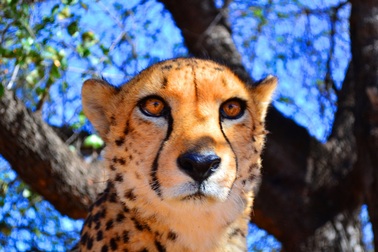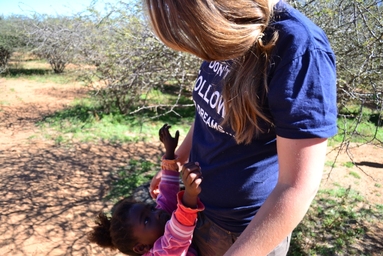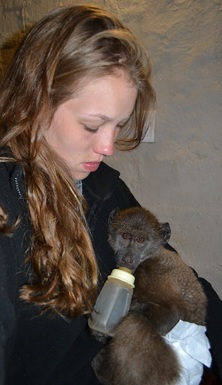Land's Fastest Animal...

Cheetah. Harnas. June 2011
I went to Africa and hugged a cheetah. Something of which many people dream, and I did it. My path to achieving that goal wasn't an easy one, though. At Vandy, I learned all about the incredibly low genetic diversity of cheetahs. With so few cheetahs remaining, Namibia, home to the world's largest wild cheetah population, was the perfect place to find them. At N/a'ankuse, cheetahs lived adjacent to my room. I learned how to care for them, prepare darts for their anesthesia, and interpret their behavior. Finally, when it came time to help with the footprinting database project, I was slightly more confident. After entering the enclosure and watching their respect for humans, I decided to go into the tame cheetah enclosure. Progressively, I got more and more comfortable with the land's fastest animal. Through them, I began to appreciate the importance of species conservation. Even more importantly, I recognized how imperative it is for humans to actively reverse their negative impacts on the world. Starting with discouraging poachers, uniting with farmers, and educating the public, sanctuaries like N/a'ankusê and the volunteers who support them can help save the cheetahs for future generations.
People of the Bush...

Bushmen School. N/a'ankusê. June 2011
I went to Namibia with the intent to immerse myself. I wanted eat what locals ate, do what locals do, and do my best to overcome language barriers to bond with people of an entirely different culture, language, creed, and nationality. For one month, I was living in the Kalahari Desert, home to the Bushmen for 20,000 years. The Bushmen of Namibia still live a primitive life, by our definition. As hunter-gatherers, they often live in huts, speak one of the San languages, and have little influences from Western civilization. N/a'ankusê and other sanctuaries work to integrate Bushmen into the conservation effort by providing them jobs, supporting them with donations from volunteers, and creating schools for their children. Two of my days in Namibia were spent at schools which teach the Bushmen's children how to read/write/speak in English, Africaans, and San. The disparity between American preschools and Bushmen schools was obvious. The Bushmen cherish leisure, singing, conversation, and dancing. School began with a snack and ample time on the playground. Class was often interrupted for a song and a dance. Kids were taught, more than anything, how to play. Welcome to a society where simple happiness is prioritized over education and literacy.
When Nature is Disrupted...

Orphaned baboon. N/a'ankusê. May 2011
Of all of the tragic things to learn in Africa, one of the most heartbreaking, for me, was the story of baboons. Their abundance makes them easy targets for people whose lives are disrupted by them. Classified as 'pests' by the Namibian government, baboons are shot and left to die. Often, the babies are the ones who suffer the most. Sanctuaries rescue babies who have been orphaned. Unfortunately, sanctuaries often have to rescue babies that were initially family pets but got too big and dangerous for the household. Occasionally, these babies are too young to even sleep alone at night. Volunteers have to surrogate parent some, including 6 month old Rudie. The most complicated factor: once baboons are sufficiently introduced to humans, they can never be released into the wild. As such smart creatures, they could easily break into homes for food and shelter. In just one month, I heard story after story of baboons being orphaned, drowning in a dam, being dropped off by people who initially wanted to keep them as pets. And to think, this whole dilemma is brought about by humans. Although I learned to love having baboons jump on my shoulders, play with my hair, and hold my hand through the wire cages, they all deserve a different home. A natural home where they can live free without interruption.
